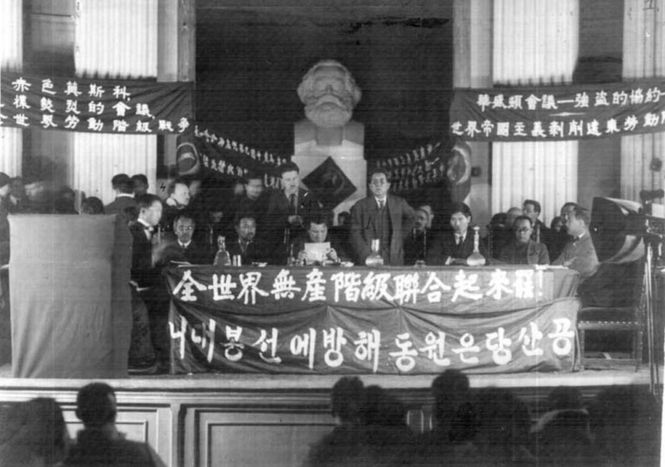
This article is an English translation of a Korean article written in 2017. The article was re-uploaded in March 2019. In this translated piece, South Korean militant Myungkyo Hong argues for the need for internationalism articulated through the framework of East Asia from below. Platform C plans on translating its Korean articles into English for an international audience. If you have any questions on our activities, social movements of South Korea etc., reach out to us on platformc@protonmail.com or myungkyo.hong@gmail.com
Starting a fire of East Asian solidarity
The American financial crisis that started in 2007 with the subprime crisis immediately became global. There were dollar shortages around the world, a fiscal crisis in Europe with the Euro being devalued, and other regions, including Latin America, suffered under an economic downturn.
However, East Asia was evaluated to have succeeded in a swift recovery despite being hit by the crisis as well. The East Asian countries of South Korea, China, Indonesia et al joined the ranks of the G20, which replaced the G7. China, especially, became the world’s biggest dollar reserve, and today, is defying U.S. hegemony in the economic and military spheres.
China, having been integrated into the world economy through reform and opening in the 1980s, led East Asian regionalism with rapid growth. Vietnam and other Southeast Asian countries soon followed through, reaching the ranks as the “world’s factory”. Japanese capital in the 80s and South Korean capital of the 90s organized value chains based on these developing nations and extended foreign investment, with an extensive focus on manufacturing. These achievements led to a point at which the East Asian development model was hailed as an “alternative capitalist type”. Those that highlighted the cultural identity of East Asia attempted to reinstate “Eastern values”, presupposing “a unique identity” of East Asia. This gave rise to a discourse on “confuscian capitalism” and “Asian values”, which in turn led to justifying patriarchal corporate cultures or pardoning overexploitation by praising the diligence of Asian workers.
In fact, the reason behind the rapid growth of East Asian manufacture was the continual growth of the U.S. consumer market. The USA had sustained this growth through a tripartite of deficits: trade deficit, fiscal deficit, and household debt. However, this contradictory mechanism was what brought the crisis into being in the first place, and without challenging this system, the instability of the world’s economy will not be resolved.

Recently, East Asia has seen its relatively stable employment collapse due to severe neoliberal reforms. Not just Japan and Korea, but also of socialist countries such as China and Vietnam. China has reached the Lewis turning point where labor supply is no longer unlimited, which has led to foreign capital leaving the coastal cities for inland China or Southeast Asia. Hundreds of millions of rural migrant workers have lost their jobs and are returning home. Although Vietnam is still an emerging country that is expected to grow rapidly, it also faces problems such as those where people just over the age of 30 are still having a hard time acquiring a job.
[“The Lewis turning point is a situation in economic development where surplus rural labor is fully absorbed into the manufacturing sector. This typically causes agricultural and unskilled industrial real wages to rise. The term is named after economist W. Arthur Lewis. Shortly after the Lewis point, an economy requires balanced growth policies.” wikipedia]
Also, East Asia is vulnerable to global financial crises as it has dismantled its capacities to shield itself from capital liquidity. As a result, while East Asian countries have increased their foreign exchange reserves to significant levels, this is not a sign of stability but rather proof of reliance on the U.S. economy. Therefore, the impact that East Asian countries will face from the American economy’s crisis is bound to be significant. If the crisis is internalized in various ways and the impact on the subject is met, then we are bound to see extreme disruption.
Another concurrent crisis in East Asia is the serious threat of war on the Korean Peninsula. Compounding conflicts and overlapping contradictions between the involved parties make it difficult to find a solution. In addition, China holds the problems of being divided with Taiwan, having a conflict with Hong Kong’s civil society in a contradictory state of one country, two systems, not to mention the dispute over the South China Sea. While actively satisfying U.S. interests, Japan is serving as another axis threatening East Asian peace by covering up historical conflicts and strengthening its drive towards the right. This instability and asymmetry make it so that holding a rosy outlook for the future of East Asia is difficult to maintain.
So is East Asia the rope that pulls capitalism out from its demise? Or will it eventually become a tinderbox that overwhelms the Middle East? Will the global capitalist system be reorganized around East Asia, including China, despite the ongoing economic downturn in Korea and Japan and the growing war crisis? If not, how should East Asia be defined today? And what are the roles of the workers’ movements and social movements?
East Asia’s Instability
The crisis facing global capitalism is not just the crisis of American hegemony. Today, the growth of the East Asian economic structure has become difficult to imply the new growth of capitalism. Rather, the relative rise of East Asia’s economy against the West is facing the limits of its expansion. This is because China’s economic growth is not based on a new accumulative system. Rather, it was a repetition of the model of export-driven industrialization based on low wages and the devaluation of Yuan, just in a more extreme form, which has deepened China’s integration into the capitalist world system.
In the future, if East Asia has less room to acquire cheap raw materials and labor, production costs rise, and competition in the world becomes intense, the high growth rate of East Asia eventually becomes another pressure on the capitalist world system. Thus, the reorganization of global capitalism centered around East Asia leads to a more serious phase, delaying the crisis, rather than opening up new hegemony. The working class faces serious hardship, and capital cannot find a way to solve it.
The fact that China’s major industries rely on foreign capital and technology is a sign of vulnerability that threatens sustainability rather than the potential of the Chinese economy. To overcome this, the Communist Party of China is constantly striving for a “harmonious society” inside and a “belt and road initiative” outside, but it is difficult to predict success or failure. China has not overcome urban and rural imbalances, and intense exploitation of labor continues.
The recent surge in layoffs and destabilization of labor are also among the aspects of the crisis. In China and Vietnam, disputes of unorganized workers are frequent, but they are not being developed in an organized fashion. Without the practices of organizing this contradiction, class antagonism can only intensify between nation-state borders.
Discourses on East Asia
The keyword ‘East Asia’ is reemerging. But discourses and ideologies with clear limitations, such as delusions over “Confucian capitalism”, ethnocentrisms, and a lack of understanding the world system, hinder our attempts to gauge the reality of East Asia today. Furthermore, East Asia lacks a sense of solidarity among its neighboring countries and has accumulated sharp historical conflicts. Job changes due to global production networks force workers to accept crises within the framework of nation-states rather than as a common class issue. In this situation, the rise of ultra-nationalisms and far-right populisms in the West is quite concerning.
Therefore, we must, first of all, assess how the masses understand “what East Asia is,” expand our understanding of workers in other countries, realizing that the oppression and contradictions workers face are not that different, despite borders, ethnicity, and religion. Only then can solidarity, at the level of social movements, become possible, and devising an alternative world not stay a pipe dream.
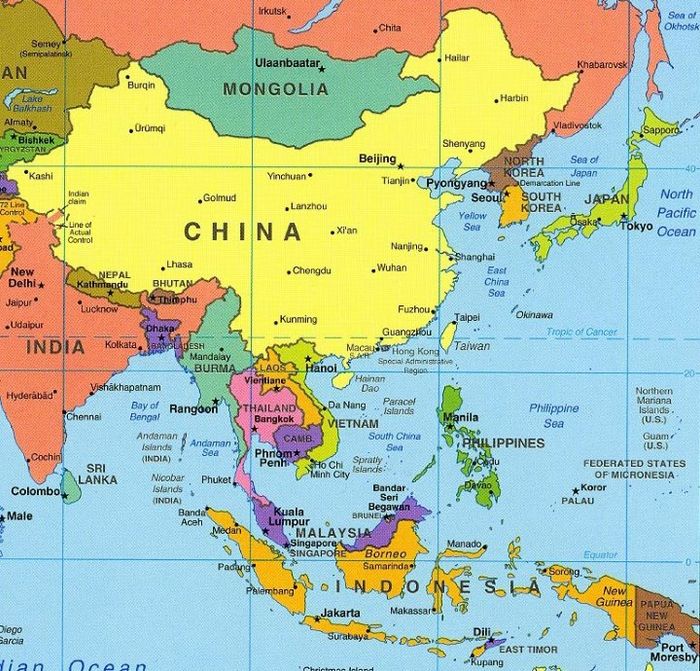
It was after the collapse of the Soviet Union in the early 1990s that a discourse on East Asia emerged among South Korean intellectuals. With prospects for social transformation dimmed, an alternative discourse that articulated issues beyond revolution in one country was needed, and the topic of East Asia was suggested. A direction for practice, critical against both capitalism and nationalism, was proposed based on a mass perspective. This continued until the early days of the Roh administration, which then proposed the notion of “Northeast Asian Hub” countries.
The logic and orientation of this discourse have changed alongside changes of dynamics both domestic and abroad, and divergences based on ideological lines have emerged as well. Though the theories and practices for East Asia should not be limited within academic discourse, it would be nonsensical for social movements to carry out specific practices while entirely dismissing such discussions. This is because the ideological effects of academic discourse affect today’s workers’ movements as well. We need to look at the achievements and limitations of this together.
What is “East Asia”
The image of East Asia as a region is not fixed. Several names have designated the region, including Northeast Asia, the East, and the Asia-Pacific, with different interests being involved in each. For example, Japan and China have conflicting interests when conceiving a model beyond the ASEAN+3 (Korea, China and Japan): a clash between the East Asian economic community model and the Asia-Pacific Economic Cooperation (APEC) model. Japan demanded American participation, while China did not want the US to be involved in East Asia. In addition, when the Korean government spoke of East Asia, it did so with the self-centered desires being explicit, making it hard to guarantee universality, while China, having extensive territory in all four directions, cannot simply define itself as an “East Asian country.” Therefore, East Asia is not simply defined by region. It can only serve as a medium for secondary applications: academic, ideological, and institutional.
Each discourse on East Asia has its own distinctive development depending on its ideological orientation and the social realities it embeds. When the topic of East Asia was first raised in the early 1990s, it was based upon a revolutionary perspective towards the direction of creating an alternative system, but in the mid-1990s, when the East Asian developmentalist model was praised, it was around the notion of Confucian capitalism. Later, during the Roh administration, the notion of a Northeast Asian Hub, an economic-centered East Asian regionalism, rapidly emerged.
Discourses on East Asia each have their own limitations. An alternative East Asia can’t be plucked out from history by selectively picking through some aspects from each while rejecting others. Not to mention the fact that the common thread that holds these discourses together is the questionable notion of a common East Asian culture. Culture is not a fixed entity, but rather something fluctuating that changes along with the ages and its social context.
Then why insist on the need to think of “East Asia”? Above all, it is the only word to denote the political, economic, and international situation in which we find ourselves in. In East Asia, the existence of other countries are regarded to be problematic in various ways due to historical, political, and economic conditions. These divisions are complicated to the extent that the plans of political powers and capitals can’t overcome the divisions; the conflicting interests amplify antagonisms. Although the Alternative East Asia prospect is relatively free from criticism compared to other discourses, but is also incapable of explaining what East Asia is and why we should care.
East Asia is not an entity with fixed boundaries or structures. It should rather be defined as a floating historical space that changes depending on the actions of subjects that constitute the region. Therefore, in order to reveal what East Asian solidarity is through practice, the possibility of transforming the lives and society of East Asian people must become apparent. Instead of resorting to homogeneities such as common ethnicity or traditional culture, alternatives should be sought with a clear eye at the contradictions of “reality.” This is none other than the possibility of war looming over the East Asian masses and the exploitation of labor by global capital. In these contradictions, we are one regardless of nationality, and we share the same interests. The extreme labour intensity Vietnamese workers face is no different from the reality non-regular workers in Korea face. The war anxiety experienced by the Okinawa people, who have been fighting for decades to have the U.S. withdraw its military base, is no different from the crisis of war looming over South Koreans.
Social movements should lead, referring to the practices and popular sentiment of other countries’ social movements, and concretize these practices. Instead of evaluating others based on criteria derived from one’s own national context, ideological and cultural differences should be identified and used as opportunities to split their own national contexts into two. Only the mass movements can be the subjects of this drive. In other words, it is necessary for social movements to organize practices that cracks open self-identities. We shall call this ‘East Asian International Solidarity’ and ‘the practice of internationalism in the workers’ movement’.
East Asia from Above
Of course, East Asian solidarity is not an easy task. Above all, historical and international political turbulence and military threats surrounding East Asia make this difficult. The issue of the Korean Peninsula alone is showing a total crisis. The U.S. has been carrying out a “pivot to Asia” strategy by strengthening the U.S.-Japan alliance and strengthening the presence of U.S. troops in the Asia-Pacific region to prevent China’s rise. This has led to an arms race between the U.S. and China, causing conflicts on the Korean Peninsula and the South China Sea. Furthermore, the chicken game between the two countries has been vicious as North Korea has recently tried to materialize its nuclear weapons development and draw its status as a nuclear power and recognition of its regime. Conflicts with China have become acute as even the South Korean government pushed ahead with the THAAD deployment based on North Korea’s nuclear weapons program. These conditions make it difficult for East Asian people to face the situation based on the “right for peace.” It only helps to drive public opinion in a bad way, such as showing hatred to other people, supporting the redeployment of tactical nuclear weapons, or supporting a preemptive strike against North Korea.
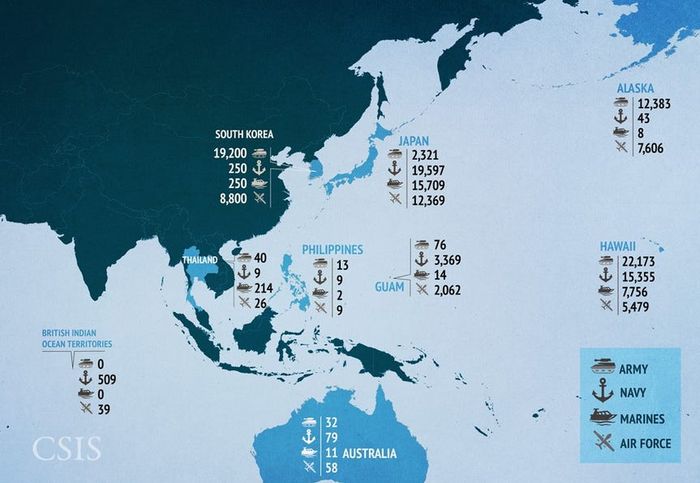
The projects of creating a common East Asia from above by governments and capital are quite explicit. Capital is moving to China and Southeast Asia for cheap labor, and countries are praying for an “East Asia from Above”, all different aside from the name. In a situation where what East Asia is is determined solely by the ruling class, then transnational connection has a greater probability of becoming domination than liberation.
Historical conflicts in the modernization of the 20th century and the resulting ethnocentrism make it difficult for people to unite. East Asian countries were colonized by unequal treaties enforced by Western powers rather than by international law, resulting in a transition to distorted nation-states. The Korean Peninsula and Southeast Asia were colonized, China was anti-colonial, and Japan became imperialism, and war criminals and divided countries during the Cold War. Therefore, it is necessary to develop social and international solidarity, not national-state-oriented East Asian regionalism, to derive regional prospects for alternative globalization movements.
What is to be done
The attempt to build a framework of resistance at the East Asian level against the globalization of capital is the “East Asian Alternative System Theory.” The move calls for a resistance reconstruction into a democratic Asia, not a hegemonic Asia, and a social Asia, not an Asia of capital. It is time for the labor movement to join forces in transnational practice to prepare pan-Asian labor norms and social regulations without being trapped in its own problems. This discourse, raised by left-wing intellectuals, pointed to the limitation of lack of concrete alternatives and under-practice. The analysis of the global economy was insufficient, and only imagined alternatives.
We shall call the attempt to build a framework of resistance at the East Asian level against the globalization of capital, “An Alternative East Asia.” The move calls for a resistance to reconstruct a democratic East Asia, not one of domination, and a social East Asia, not one of capital. It is time for the labor movement to look outwards and join forces in transnational practices to prepare labor norms and social regulations on a pan-Asian level. As the discourse of “An Alternative East Asia” was brought up by left-intellectuals, it held the limitations of lacking concrete alternatives and practices. The analysis of the global economy was insufficient, and its alternatives were merely imagined.
At the level of mass movements, various attempts were made. Since the World Social Forum in Mumbai, India in 2004, international solidarity has been attempted on each continent, and the “Seoul Conference on Asian People and Social Movement” was held in June of the same year in Asia. The joint statement issued here begins with the sentence, “Asia’s popular and social movements have gathered to oppose the World Economic Forum, neo-liberalism and war.” Since then, solidarity has led to solidarity and forums on a case-by-case basis, but recently it has been very insignificant.
The Korean Confederation of Trade Unions(hereby KCTU) did not neglect East Asian international solidarity as well. In 2005, an expeditionary struggle took place against the World Trade Organization ministerial meeting in Hong Kong, which has since served as an opportunity to strengthen solidarity with the Hong Kong Trade Union. When local workers fought in Korean companies operating in Bangladesh, the Korean Confederation of Trade Unions actively joined forces. Such specific practices should be strengthened.
10 years ago, an international activist called for “practical approaches over the long run” to strengthen Asian solidarity. More specifically, “preparing joint agendas for action,” “organizing education & exchanges to strengthen the capabilities of Asian labor & social movements,” and “strengthening the capabilities of independent democratic unions & radical social movements.” To this end, he emphasized the need to “consciously put effort into the goal of establishing a network between Asian social movements.” This was what the KCTU had in mind when it began to conduct education and exchange courses inviting Asian union organizers. However, there were clear limits such as that it was difficult for activists from the countries (China and Vietnam) crucial to the global production networks to participate, and the lack of investment from the unions. The need for concrete strategies and practice to overcome the barriers that hinder East Asian solidarity today still exists.
For that, we must devise concrete practices, both domestic and abroad.
First, the migrant workers’ movement requires a new turning point. According to a survey by the National Statistical Office, 962,000 foreigners are currently employed in South Korea, and the era of 1 million migrant workers is just around the corner. Seventy percent of migrant workers are employed in the manufacturing, service, and construction industries, which are within the scope of the democratic union movement. Thus, attention should be paid to the migrant workers’ movements in influx countries such as South Korea and Taiwan, and operate workers’ “migration” at a continental level. A good example is the solidarity with SCENEMIGWO, Nepal’s Solidarity Center of Nepalese Migrant Workers(see the May 2017 issue of “More Than Today”).
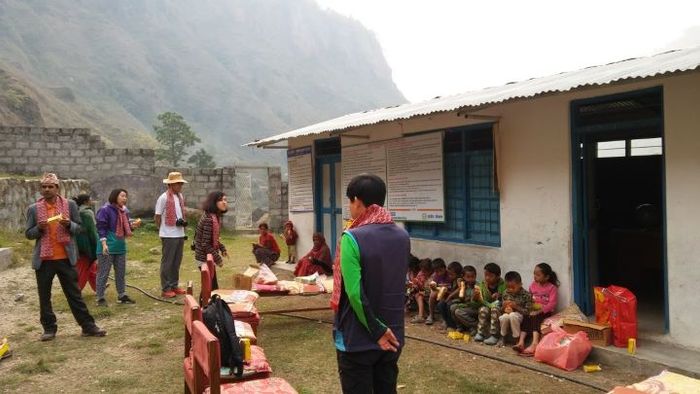
Second, we should also seek international solidarity mediated through workers hired by Korean companies operating abroad. The core countries, China and Vietnam, have “official union” systems that control workers’ movements under government leadership, which severely limits the possibility of solidarity. However, we cannot sit idly by and wait for the situation to get better as there already are many migrant workers in Korea to which the number of people returning to their home countries is proportional. It is time to seek lasting relationships.
Thirdly, strategic support pathways must be found. Currently, support for and solidarity with non-institutional and self-sustaining workers’ movements in China is centered around Northern Hemisphere NGOs and somewhat right-wing labor unions. This can refract the radical growth of Asian workers’ movements and reveal ideological limitations. Meanwhile, the Chinese government’s severe suppression of basic rights has stifled the movement’s self-development. Intervention and solidarity from social transformatory workers’ movements in nearby countries is urgently needed. We need to create a new model of international solidarity through the communication of experience, not just funds. Only then can we move towards an independent and radical movement.
Fourth, alternative media at the level of Asian social movements are needed to overcome short-term difficulties and increase communication. Understanding and translating each country’s situations and movements is a prerequisite for exchange and solidarity.
Fifth, networks for regular joint actions are also needed. Not only workers’ movements, but various social movements resisting the contradictions facing East Asia, such as peace movements and ecological movements, should sustain relations through these networks. For example, if Asian anti-war and peace activists were to gather in Seoul to hold an Asian Social Movement Peace Forum and organize a joint action day protesting the threat of war on the Korean Peninsula, the already-existing intellectual-centered practices could be expanded. In the mid- to long-term, seeking joint struggles and forging solidarity among Asian workers against the exploitation of supranational capital in East Asia is also required.
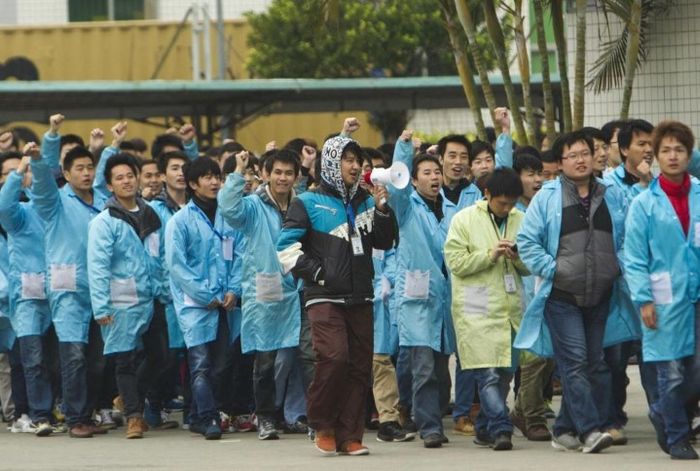
This might seem a daunting task. But the details of East Asian international solidarity will be drawn through the process of the issues of each country’s movements being actively communicated throughout the East Asian peoples, not by negotiating support conditionally. Through this, social movements in each country should identify common conditions and share revolutionary ideologies. However, it is somewhat impossible to share the struggles of the working classes in other regions due to the asymmetry, hostility, and several layers of division within East Asia. Therefore, the specificity of other countries’ movements should be “translated” (verbally and contextually) so that they can be read as their own problems. “East Asia” is nothing other than the medium through which these translations take place. Determining what East Asia is will also be constantly reset through these class struggles.
Investments in communication should also be increased. Social movements and workers know little about and are indifferent to the various movements of neighboring countries; this blank slate is where we must begin. More international activists are needed, and this will not be possible without investment from the union level. In the case of the KCTU, there is only one international director which makes it difficult to pursue various projects in the offensive. Higher interest, discussions on prospects, and the full breadth of investment are all required. ✊
Writer : HONG, Myung Kyo
Translation : Bori
